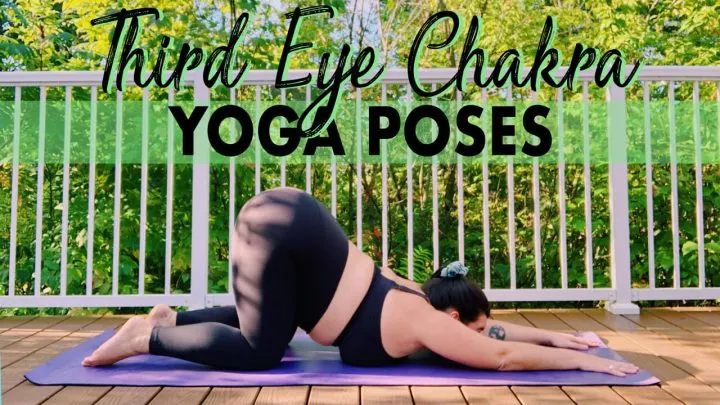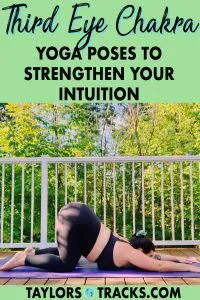The third eye chakra is about connecting to what you already know. It’s about tapping into your potential that you already have within you and understanding your psychic abilities. It’s like an extra sense, like a gut feeling, that we all have.
When your third eye is balanced you have a sense of knowing that isn’t overwhelming and you feel connected with the physical and the material world as well as with the spiritual world. This balance and energy is a beautiful thing that can help guide you through life with ease.
This extra sense can be used in yoga, to help guide you through sequences and know what’s right for you to do, practicing for what your body truly needs versus just following a yoga teacher or practicing the same postures over and over in the same sequence.
The Ajna chakra is typically not overactive as most people shy away from their intuition, aren’t taught about it or completely ignore their intuitive sense.
Third Eye Chakra Basics
Location: Centre of your forehead
Element: All elements
Colour: Indigo
Meaning: The third eye chakra is related to your intuition, your deep inner knowing. Emotions related to this chakra include confusion and depression.
Other names: Sixth chakra, Ajna chakra, brow chakra
Translation: Beyond wisdom
How Does Yoga Help Balance the Third Eye Chakra?
The third eye chakra gets activated when you are quiet, present and when you turn inward. Yoga encourages all of these things. In each pose take a moment (or a few) to close your eyes, feel into the pose and allow your body to be guided into what feels best for you.
By being present and turning inward you’re learning to listen to what’s happening in the moment instead of doing something that’s best for the future or worrying about the past.
Yoga for Third Eye Chakra Sequence
Try adding any of these third eye yoga poses to your yoga practice to connect more to your spirituality and your inner knowing!
Prefer something more zen? Try my third eye chakra yin yoga sequence!
READ MORE: Third Eye Charka Affirmations
Third Eye Chakra Poses for Tapping Into Your Intuition
When you try these yoga postures, follow my guidelines to ensure proper and safe alignment but experiment and use your intuition to help guide you into variations that work into areas that you need to stretch or strengthen the most. Your intuition will always let you know exactly what you need!
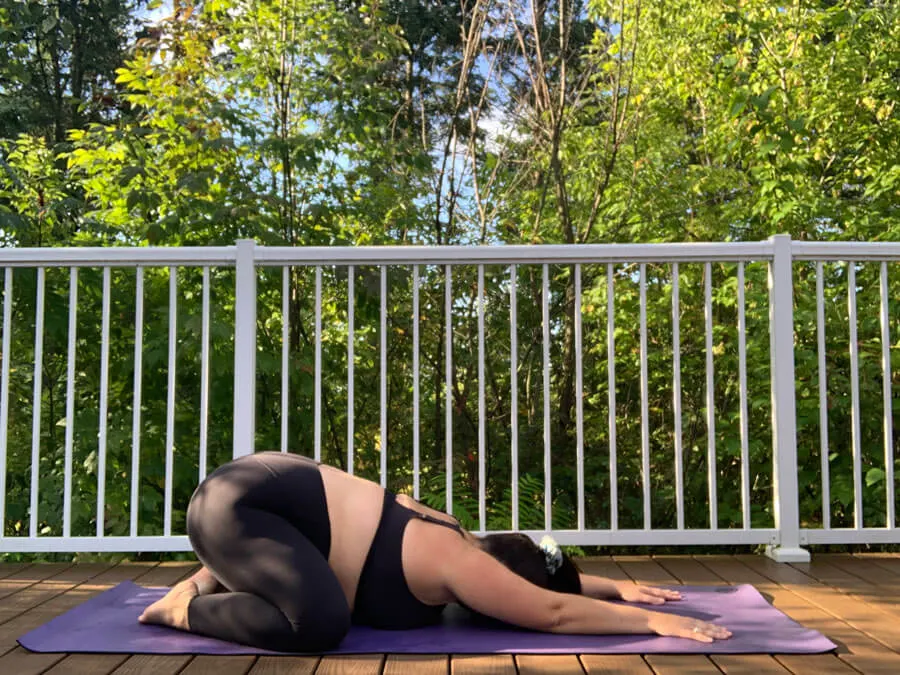
Child’s Pose (Balasana)
Start sitting on your heels, your shins tucked under. Spread your knees wide to the edges of your mat. Walk your hands towards the front of your mat, keeping your sit bones on your heels. When you can walk your hands no further, spread your fingers wide and allow your chest, forehead and arms to sink into the ground, feeling fully supported by Mother Earth.
With each inhale feel your spine lengthening, your tailbone towards the back of your mat and the crown of your head towards the front. With each exhale feel yourself settle a bit more, feel supported a bit more. Inhale, feel the space between your ribs widen, exhale, allow yourself to sink into the mat and let go. Hold for 3-5 deep breaths or longer, until you feel completely relaxed.
Variations: With a bolster, pillow or blanket or towel rolled, place it under your body and allow yourself to sink into the cushion. Another option in a wide-legged child’s pose is to bring your arms between your legs, your hands by your heels. For a more traditional child’s pose, keep your knees together with arms out in front of you or by your sides, a block can be place under your forehead if it doesn’t reach the ground. If your sit bones don’t reach your heels due to tight hamstrings, place a rolled blanket or towel between your calves and backs of your legs.
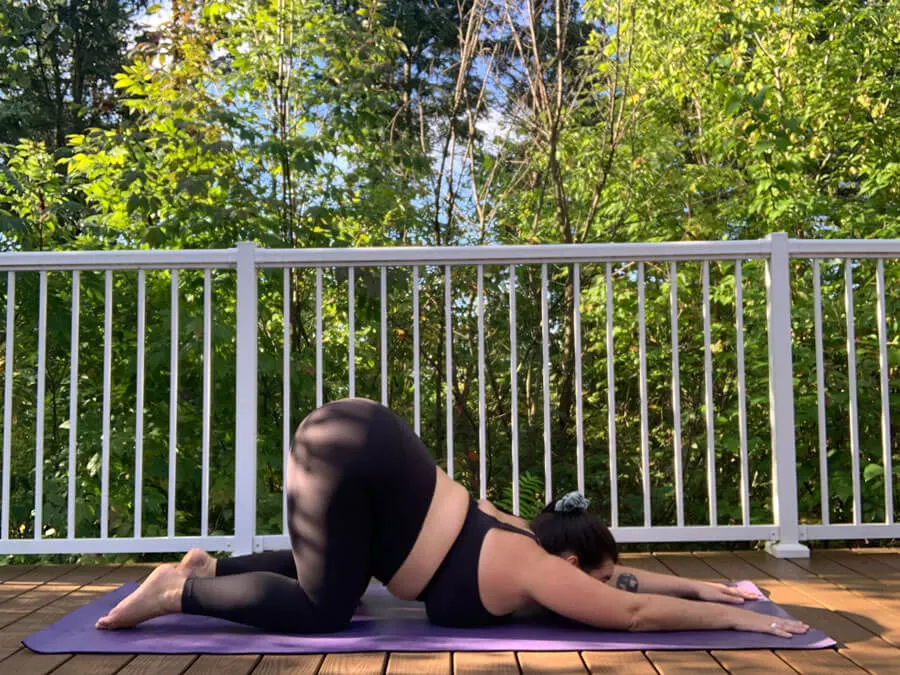
Puppy Pose (Uttana Shishosana)
Start on your hands and knees, making sure your hips are stacked directly over your knees. Without moving your hips, walk your hands forward, until your forehead or chest comes to the ground. If your chest comes to the ground look to the top of your mat, placing your chin on the ground or keep your forehead on the ground if that’s more comfortable. Spread your sit bones wide and breathe deeply for 3-5 breaths.
Variations: For a deeper stretch, place your elbows on blocks, bring your palms to touch in prayer and then bend your below to bring your hands behind your head.
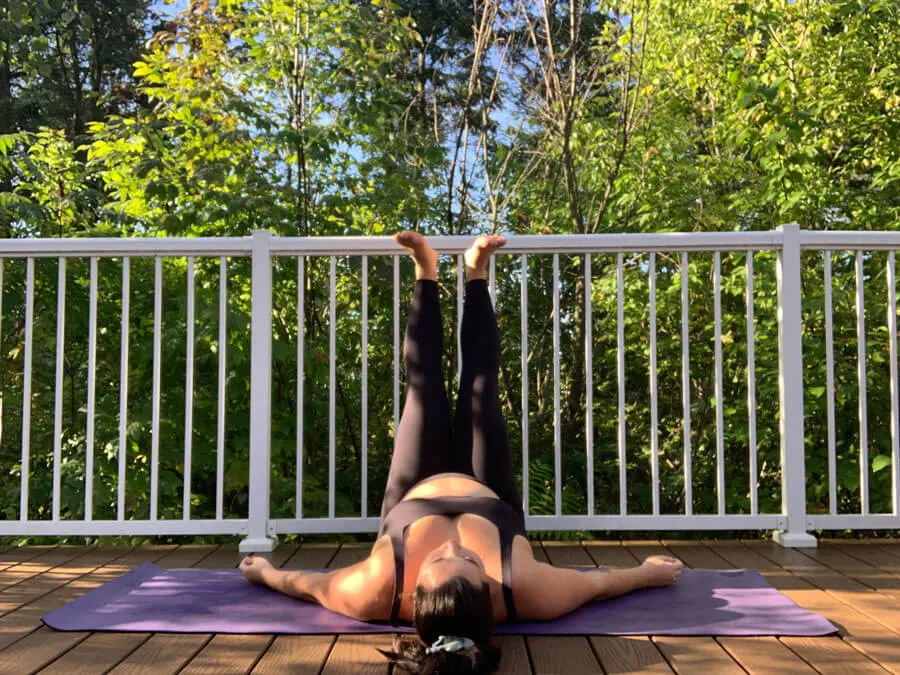
Legs Up the Wall Pose (Viparita Karani)
Lay on your back with your bum touching or close to touching a wall. Be sure to give yourself enough space so that your spine can still be long. Bring your legs so that they’re stretched up the wall, your feet flexed towards the ceiling. Bring your arms by your sides or out long in opposite directions in line with your shoulders.
Variations: If you don’t have a wall but do have a block or a blanket that is rolled, prop it under your sacrum (the lower part of your back) and then lift your legs towards the sky. This variation requires more activation in your legs but still gives the same great benefits. Allow a slight bend in your knees if comfortable. Stretch your arms out to either side, palms facing up or down.
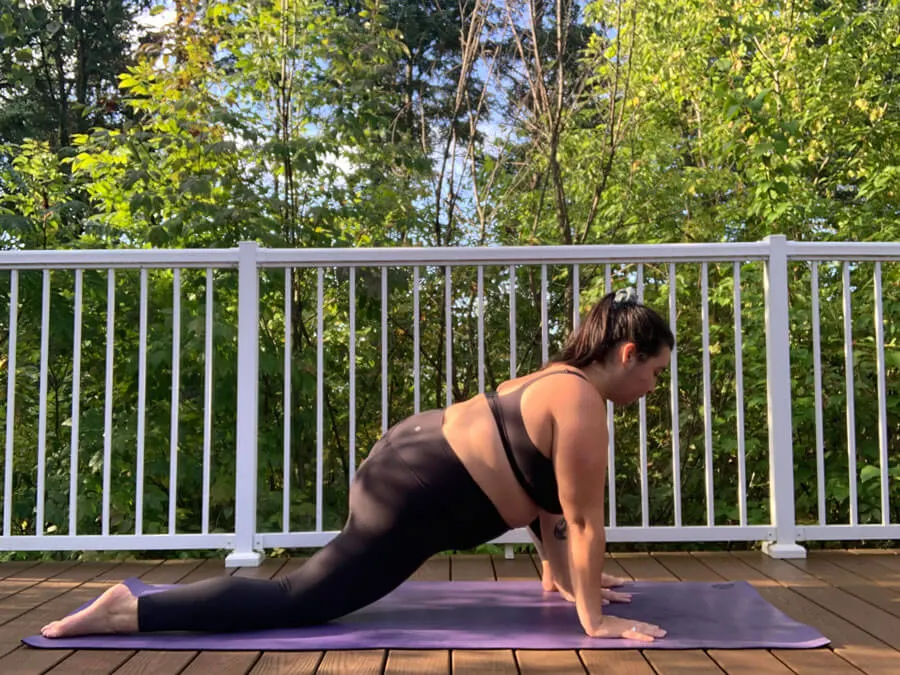
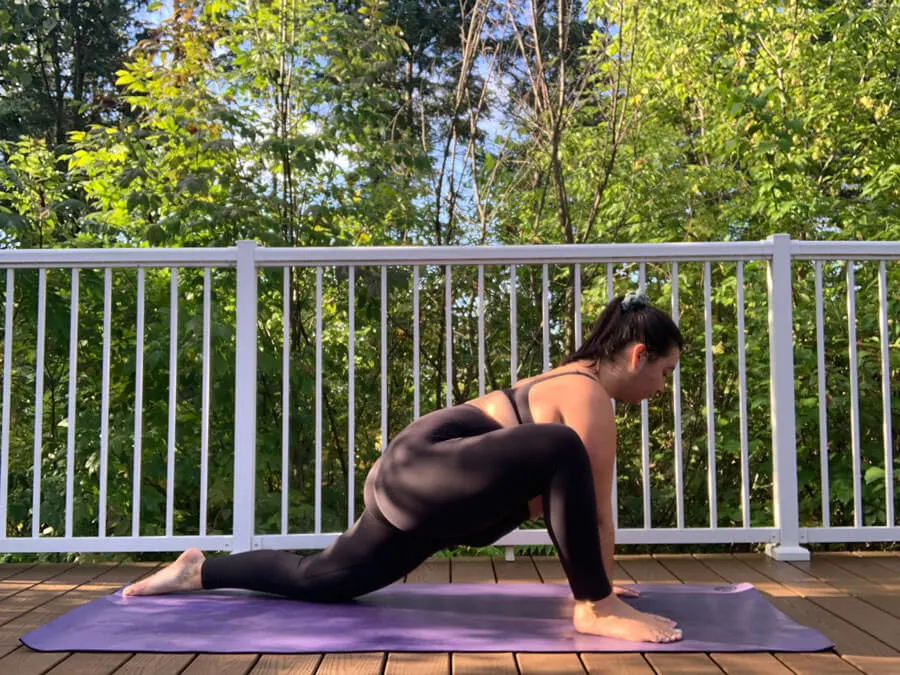
Lizard Pose (Utthan Pristhasana)
From your hands and your knees, step your right foot forward so it comes to the outside of your right hand. This may be enough for you already or you can walk your hands and your right foot forward so that you’re in a deeper low lunge, feeling your left hip flexor stretch. Option to walk your right foot out further to the right if that feels better for your right hip.
Stay here on your hands for one variation, be sure to not let your upper back collapse, you want to have a round upper back by pushing into your palms. To go deeper, come down onto your forearms. If this is too intense, place blocks under your forearms. Let your head hang if that feels comfortable.
In any variation you can roll your right foot onto the outer edge, but first bring your foot on an angle, so that your right toes are pointing to the top right corner of your mat and flex your toes. Hold for 3-5 deep breaths or longer. Repeat on the other side.
Variations: To go further into any variation, after rolling your right foot onto its edge, use your right hand to gently push into your thigh, just above your knee to open your right hip and chest as you turn your upper body to the right.
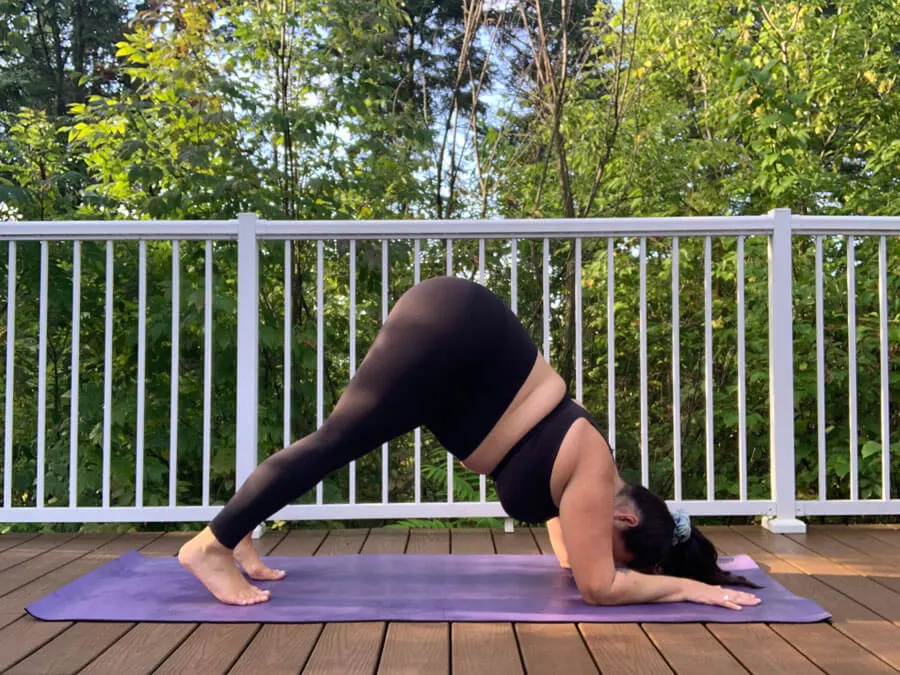
Dolphin Pose (Makarasana)
Start on your hands and knees, your shoulders stacked over your wrists, hips over your knees. Come down onto your elbows and walk them close enough together that you can grab opposite elbows with opposite hands. Let go of your elbows and bring your forearms to the mat, fingers pointing towards to the top of the mat.
Tuck your toes. Spread your fingers wide and pushing into your palms and forearms, lift your hips like you’re coming into downward dog. Continue to push into your forearms to not let your shoulders collapse but keep your shoulders away from your ears.
Walk your feet closer to your elbows if that feels more comfortable or for an extra challenge. Allow your neck to be in line with your spine as you engage your core. Bring your rib cage together to avoid arching your lower back. Hold for 3-5 breaths. Perhaps experiment with walking your feet closer or further back and lifting one leg and then the other, which is prepping for forearm stand.

